 (Been able to do some of my own writing, this weekend – Sunset and Steel Rails is proceeding apace; the tale of young Sophia Brewer — who has taken the surname of Teague and gone west as a Harvey Girl. Being a woman focused on her career, and still traumatized from what happened when her older brother gaslighted her, back in Boston … she does not realize that she is being quietly courted by Fredi Steinmetz – some forty years her senior and the owner of a nascent ranch near Deming, New Mexico, in the mid-1890s. She also does not realize at this point that she is connected to the Vinings of Austin. Because – her grandfather, Horace “Race” Vining – had two wives. Simultaneously. Not the done thing, in the 19th century.)
(Been able to do some of my own writing, this weekend – Sunset and Steel Rails is proceeding apace; the tale of young Sophia Brewer — who has taken the surname of Teague and gone west as a Harvey Girl. Being a woman focused on her career, and still traumatized from what happened when her older brother gaslighted her, back in Boston … she does not realize that she is being quietly courted by Fredi Steinmetz – some forty years her senior and the owner of a nascent ranch near Deming, New Mexico, in the mid-1890s. She also does not realize at this point that she is connected to the Vinings of Austin. Because – her grandfather, Horace “Race” Vining – had two wives. Simultaneously. Not the done thing, in the 19th century.)
Frank Thurmond, at the reins of the buggy, followed Mr. Steinmetz’ horse, going up a narrow and dusty track which first crossed the arroyo and then re-crossed it so many times that Sophia lost track. A thin trickle of water ran from pool to pool somewhere in the center of a stretch of tumbled rock and gravel, as the narrow worn track mounted gradually into the foothills. The abrupt and jagged slopes of a brief mountain range frowned down upon them from above – hard blue shapes, as craggy as if chipped from slabs of glass.
Almost imperceptibly, their party had mounted up into the foothills – still gently rounded hills, hardly worth the name, but the horses were at some little effort to pull, and by this Sophia knew they were going up. They came around to the top of a low knoll, and there appeared a distant aspect of Deming some distance and below, lay out to their eyes as if in a life-sized bird’s eye view map. The sun struck distant silver glints from the turning windmill wheels – that and a few birds wheeling on motionless wings high in the sky above being the only sign of life.
“Only a little farther,” Mr. Steinmetz reined in, and spoke over his shoulder. “See the top of that tree? There are a couple of cottonwoods up there, by the only year-round spring that I can find. I’ve come up sometimes of an early morning, hunting venison, but haven’t bagged one yet. I always change my mind about shooting them, when all they want is a nice cool drink of water.”
“You’re disgustingly sentimental, Fred,” Frank Thurmond observed, in slight disparagement. “Animals were put on earth so that we could make use of ‘em.”
“I do make use of them,” Mr. Steinmetz responded, without heat. “It gives me a mighty pleasure, to sit and watch them, fine and strong and proud, going about their business.”
“You’ll go hungry in winter, Fred,” Frank Thurmond replied, and Mr. Steinmetz laughed.
“What use is it to me, to gut and dress a whole deer, and smoke the meat over a fire, since it is more than I can eat in a month myself, when I can just go into town and get a good meal at Fred Harvey’s without a tenth of the trouble? Priorities, Frank. Priorities – now that I have the luxury, I might as well take full advantage.” He grinned at Sophia, who said – moved by sympathy for small and large wild things and approval of Mr. Steinmetz’ sensibilities,
“I think it very fine of you, to do so. There are wise old philosophers who sat that it is healthier and even morally superior to abstain from meat in any form.”
“I won’t say that I take it that far, Miss Teague!” Mr. Steinmetz laughed so heartily that Sophia might have taken offense; save that there was not a hint of insult in his words or tone. “I am in the cattle ranching business, after all. And I relish a good bit if beefsteak, or a pork cutlet as well as any man … most especially when it is cooked in a Fred Harvey kitchen and brought to me by one of his pretty waiter girls!”
“It is always a pleasure to set a meal before a man who appreciates good cooking,” Sophia replied, only realizing when the words were out of her mouth that she did sound terribly flirtatious. But it was not Mr. Steinmetz who took another meaning from that, but Eleanor Woods, who blurted, in tones over which a slight touch of frost hovered,
“I did not realize, Miss Teague – that you were employed by the Harvey House. You seem like such a respectable person.”
“Miss Teague is a respectable person, Ellie,” Lottie Thurmond leaped into the conversation with a tinkling little laugh, turning her head from the front seat of the buggy where she sat next to her husband. “And I relish her company very much. She is one of these New Women that you read so much about in the magazines.”
“I suppose so,” Eleanor Wood’s voice thawed slightly, although she still sounded dubious. “It doesn’t seem quite right to go away from your family, and work for wages …”
“I’m an orphan, with no close living relatives,” Sophia replied, as if by rote. “I consider Fred Harvey as my family.”
“But still,” Eleanor Wood persisted. “It still seems very strange – even if for family, doing work in the public sphere. A woman’s proper place is in the home …”
Mr. Steinmetz snorted in derision. “Tell that to my sister and niece – they worked in the family general store, while my brother-in-law and I drove freight wagons. Later on, when my niece married, she took to trailing cattle north with her husband … and the Vining boys – their mother kept a boarding house, and she was a very fine woman indeed, by all accounts. You’d meet the finest sort of folk in Texas at her table. No angel of the hearthside business for them. There was too much to do.”
“But that was in the West, before everything was settled as it should be,” Eleanor Wood argued. “Conditions were different than in the east, then…”
“So they are still,” Lottie Thurmond agreed. “And may continue to be, for I favor such a wider degree of freedom, and I am certain so does Miss Teague … is this your darling little spring, Fred?”
During that conversation, the buggy had come around another turn in the rough track, and now they looked full on a steep rock hillside, with a pool of water at its base, rimmed by smaller rocks, and stands of water-loving reeds. A narrow white thread of water fell down through a ragged cleft between two rock faces, which were painted with small blotches of velvety green moss. The sound of the water, splashing and chuckling to itself was musical, entrancing as the scent of cool fresh water – cool water and a patch of green grass. The leaves of the poplar trees rustled in the light breeze over their heads. The air in the little dell felt deliciously damp after the aridity of the open desert around town. The wagon track went no farther than here, for the hillsides closing in all around were too precipitous for any but a single man on foot. The little dell was adorned with some bright green vines, spotted with red and blue flowers, hanging along the steep rock slope, and a few straggly bushes covered with yellow blooms which looked like daisies – as lovely a wild garden as could be wished for in the west.
“It’s beautiful!” Sophia’s breath caught in her throat, overwhelmed by a sudden longing for the verdant green of the east. Mr. Steinmetz hastily tied up his pony, and reached up to help Sophia down.
“Do you really think so?” he asked, and Lottie Thurmond replied,
“The most perfect place for a picnic luncheon can hardly be imagined than your little paradise, Fred.”
“It is the most perfect place,” Sophia echoed, and it seemed that Mr. Steinmetz was most ridiculously pleased by her approval. Lottie, looking on them both with a certain amount of approval, continued briskly.
“Fetch us down the basket, Fred … and the rugs. Frank wishes to try his hand with his new fishing rod…”
“There aren’t any fish there save minnows,” Mr. Steinmetz warned and Frank Thurmond hissed, “Not another word from you, spoil-sport!”
Mr. Steinmetz shook his head in pity, and handed down little Ellie from the buggy.
“There are some tiny little frogs, though,” he added. “And one morning, I saw a wild jaguar-cat come down to drink.”
Ellie gave a small squeak of dismay, and her mother exclaimed,
“Surely there is not any danger to us, Mr. Steinmetz!”
“Only if it diverts you to think so, Mrs. Wood; they are nocturnal creatures and normally very shy.” He sounded exasperated; Sophia recalled his impatience with what he called female megrims. Of course, as a man of the world and long experience of the west, he would have encountered many more ferocious and dangerous animals.
“I would love to see such a beautiful creature as a jaguar,” she said, feeling slightly breathless. “Not as in a zoo, as in Boston … but wild and free; here – just as you observed the deer.”
“He won’t come today, that I can assure you, Miss Teague.” He smiled at her, the corners of his eyes crinkling in a most endearing way. “Wish that I could whistle him up for a visit here, just for you. Perhaps another time?”
“Perhaps, Fred,” Lottie replied, just as brisk. “Sophie and Eleanor, my dears – can you assist me with setting up our feast? The gentlemen are hungry – there should not be any great labor involved, for my cook has packed every kind of delicious food, and it will not take any time at all.”
“Miss Teague is well acquainted with the method of serving food in a small amount of time,” Eleanor Wood observed, in a tone of lazy malice, but there was no sting in it, and Sophia – overtaken by a sudden fit of school-girl emotion – stuck her tongue out at her, behind Lottie’s back. Eleanor Wood’s expression went through a brisk series, from startled, through pique, and then to rueful humor. She stuck out her own tongue, and then both of them burst into giggles.
“If you are both quite finished with being juvenile,” Lottie observed, without turning around, “The gentlemen are hungry. And so am I.”
“The schoolmistress has eyes in the back of her head, so she has!” Eleanor whispered, Lottie stated, without turning around, “No – only one which works properly to the front, but my hearing is extraordinarily acute,” whereupon all three women dissolved into giggles. Young Ellie and the two men regarded them, baffled – as if they all had gone quite mad.

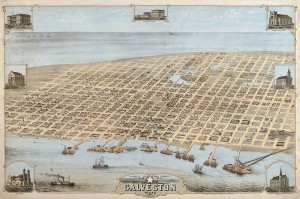
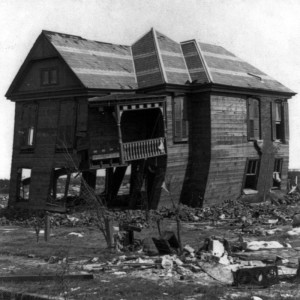
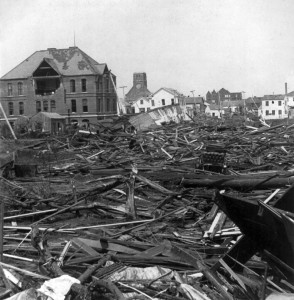
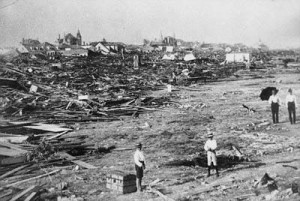

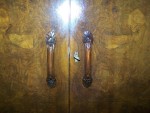
Recent Comments